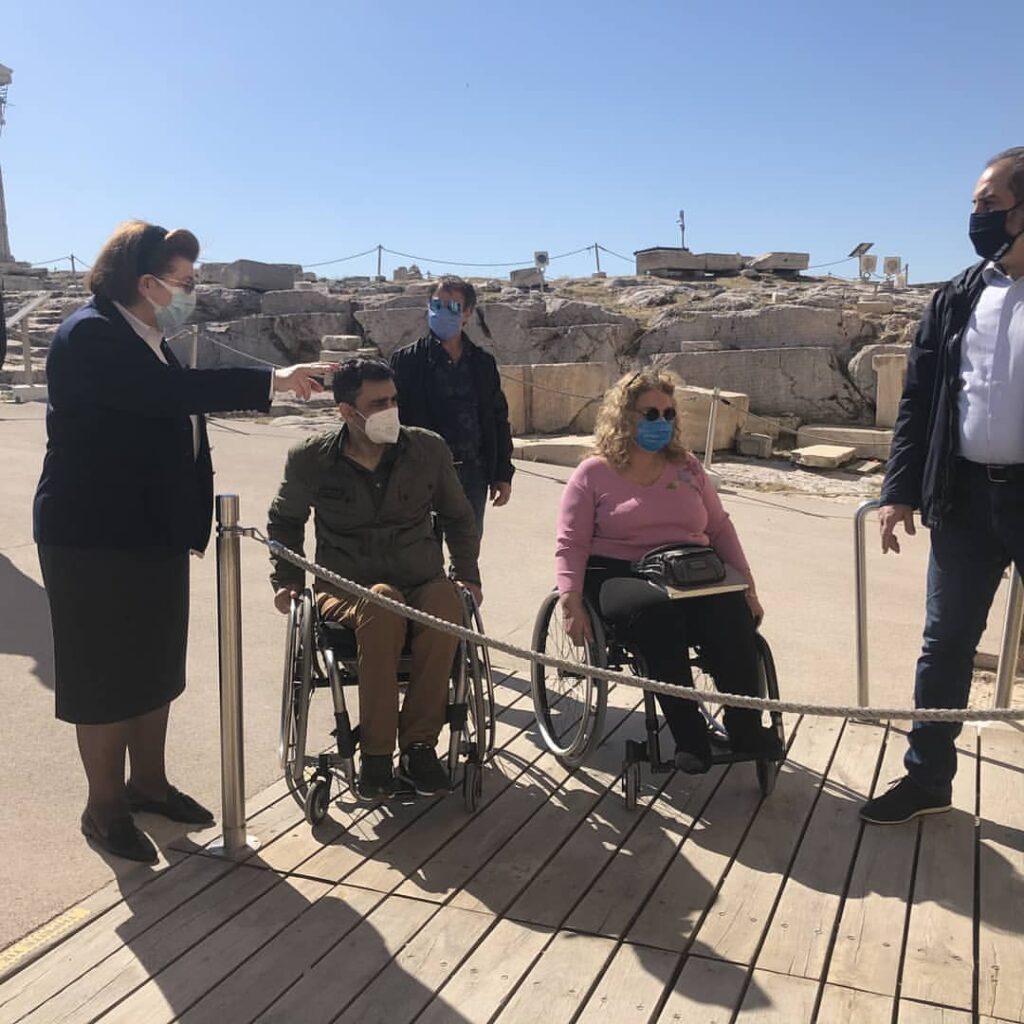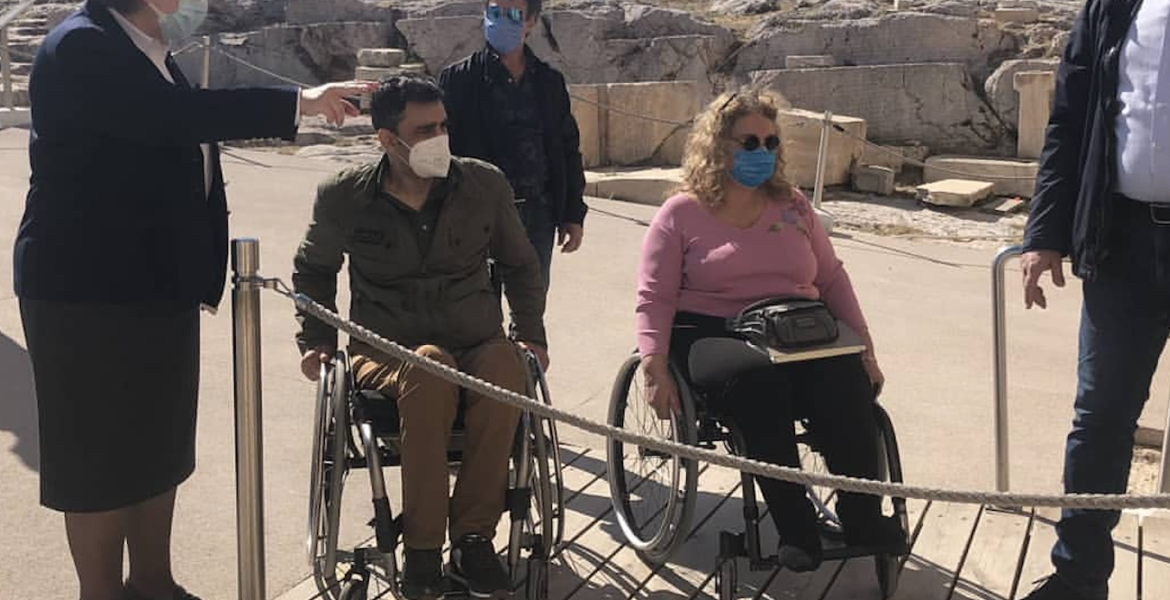
The Acropolis has now become more easily accessible for everyone to visit and enjoy, according to an announcement by Greece's Ministry of Culture.
The feedback from the Central Archaeological Council, during its meeting earlier this week, was unanimously positive, for the infrastructure developed for people with disabilities at the Archaeological Site of the Acropolis.
Last year, a concrete path was created for wheelchair users, elderly citizens and others with mobility problems to see the Acropolis in Athens up close. However, the decision stirred reactions on social media.
After the installation of the slope lift, which is an international standard of its kind and the creation of new paths, further proposals were developed to enhance accessibility to the Acropolis.
Existing signs have been moved or redesigned- bilingual (Greek and English) Braille tactile signage has been placed around the site, as well as signs in capital letters for those who are visually impaired.
Handrails and slope warning signs will also be introduced.
Moreover, for those with vision impairment or low vision, tactile paving has been implemented. With the help of their companions, they will be able to touch representative exhibits, e.g. mobile models of monuments.
In addition, the Ministry plans to create a mobile application, which will provide written and oral information about the monuments.
Greece’s decision to cement sections of the Acropolis
Earlier this year, Kathimerini sought the opinion of two architects- Yannis Aesopos, president of the University of Patra’s Architecture Department, and Dimitra Katsota, associate professor of architectural design at UPatra.
“I would say that the general impression is positive. The new floor creates a path, a walk, that the visitor can follow and observe the monuments. It somewhat marks a movement,” Aesopos said.
“It remains a technical work and does not acquire artistic and architectural value and this becomes apparent in its details,” he added.
The project was funded by the Onassis Foundation, which also donated the improved Acropolis illuminations.
- The term “Acropolis” comes from the Greek words “akron” (which means the “highest point or extremity” and “polis” (which means “city”). Acropolis can be taken to mean “High City”, “City on the Extremity”, or “City on the Air”.
- The Parthenon is often called “the world’s most perfect building.” Architectural tricks like a slight angling of the temple pedestal correct the optical impression that the building sags in the middle, and barrel-like curves on the columns counteract the illusion that they narrow in the middle. So in a way, one might say the Parthenon’s perfection is only achieved through a series of deliberate imperfections.
- The Greek flag flying on the Acropolis has special historic significance. In 1941, two young men pulled down the swastika flag flying there during the Nazi occupation, leaving it empty. Incredibly, they’d reached the Acropolis using ancient passages they’d learned about in Greek history books. It was a powerful act of defiance that set the tone for the fierce Greek Resistance movement. Today, you can see the Greek Presidential Guard, the Evzones, perform a flag-raising and flag-lowering at dawn and dusk on Sundays.
- The Acropolis is one of the earliest known settlements in Greece. Built sometime around the fourth millennium, the Acropolis was an ancient city that still retains much of its original Classical architecture and temples, including the Parthenon. The Parthenon was built between 447 and 432 BC as a sacred temple for the goddess Athena, and it’s a true marvel to behold. The entire complex of statues, temples, pillars, and structures is stunning.


